Inboard and outboard motors are two different types of motors used to power a boat.
Boaters should be able to choose between an inboard or an outboard after reading this guide.
The inboard vs outboard engine guide covers:
- Inboard motor definition and types
- Outboard motor definition
- Inboard/outboard hybrid definition
- Inboard engine vs outboard engine differences
- Inboard vs outboard motor maintenance
- Inboard vs outboard engine costs
- Inboard vs outboard motor fuel efficiency
- Inboard engine pros & cons
- Outboard engine pros & cons
- Frequently asked questions
This guide should help boaters choose their preferred option whether it's an inboard or outboard.
1. Inboard Motor Definition & Types
An inboard motor is a motor that is permanently placed inside the boat and it helps power a prop shaft/propeller through the hull.
There are two main cooling systems for inboard engines:
- Closed Cooling
- Raw Water Cooling
Both of these use water as the cooling medium but it is the system that makes them different
The closed cooling system, also called the "heat exchange system" has tubes that come into contact with the water so the water can “cool” the coolant running through the tubes.
The raw water cooling system runs raw water around the engine without having a heat exchanger. This system is not preferable since it brings in dirt and other contaminants into the engine.
There are 3 main types of inboard motors which are:
- Direct-Drive Inboard Motor
- V-Drive Inboard Motor
- Jet Drive Inboard Motor
The D-drive, V-drive and Jet Drive inboard motors are considered true inboard motors meaning the entire engine unit is inside the boat.
Direct-Drive Inboard Motor
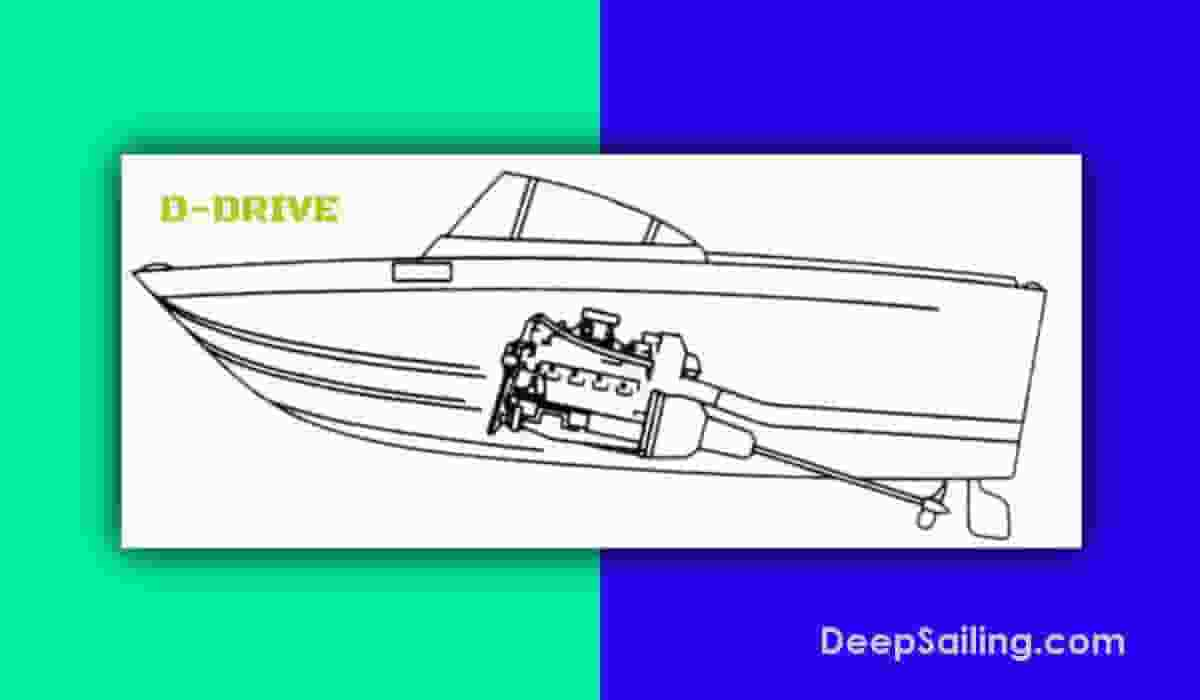
A direct-drive inboard motor, also known as a "d-drive inboard motor", is a boat motor placed in the center of the boat's interior with a prop shaft at an 7 to 12-degree angle. This prop shaft angle means the boat is always generating some lift in the water.
The d-drive inboard motors are designed to provide direct power to the propeller. This means that the engine is directly connected to the propeller shaft which allows for efficient power transfer and maximum performance.
To operate a direct drive inboard motor, a boater will typically start the engine with a key in the ignition from the cockpit and engage the transmission to engage the propeller.
The direction of the propeller will depend on the rotational direction of the engine and the orientation of the propeller blades.
Most direct-drive inboard motor propellers rotate clockwise when viewed from the rear of the boat.
The benefits of a d-drive inboard motor are they provide maximum performance and are energy efficient.
One disadvantage of a direct-drive inboard engine is it is located at the center of the boat which means it can take up a lot of space. This is especially annoying in smaller boats.
V-Drive Inboard Motor
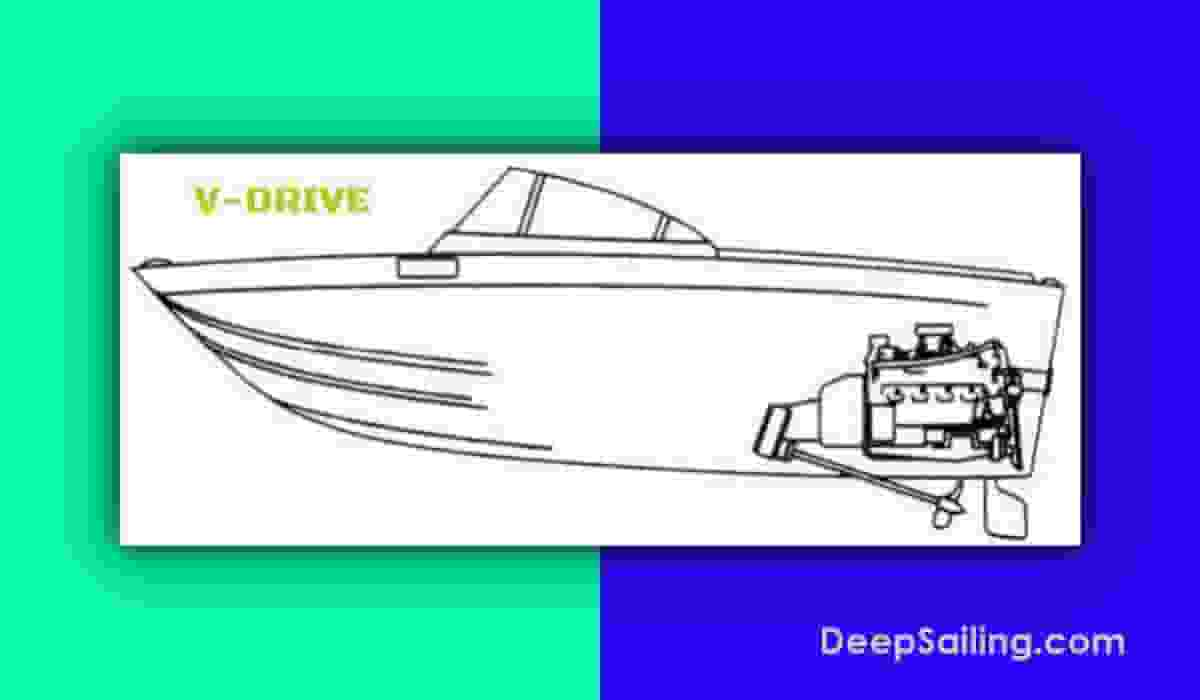
A V-drive inboard motor is a type of inboard motor that is mounted in the hull of a boat with the transmission and propeller located aft of the engine.
The engine is mounted in a V-shaped configuration at 180 degrees from its typically orientation with the propeller shaft running parallel to the keel of the boat.
The V-drive design allows for the weight of the engine to be distributed towards the stern of the boat which can provide better balance and handling.
To operate a V-drive inboard motor, a boater will typically start the engine and engage the transmission to engage the propeller.
The benefits of a v-drive inboard motor are it is more efficient at delivering power to the prop shaft with only an 8% loss and v-drive inboard motors offer more space onboard as they are located aft.
One disadvantage of a v-drive inboard motor is the weight distribution of v-drive engines makes it harder to get the boat on plane.
Jet Drive Inboard Motor
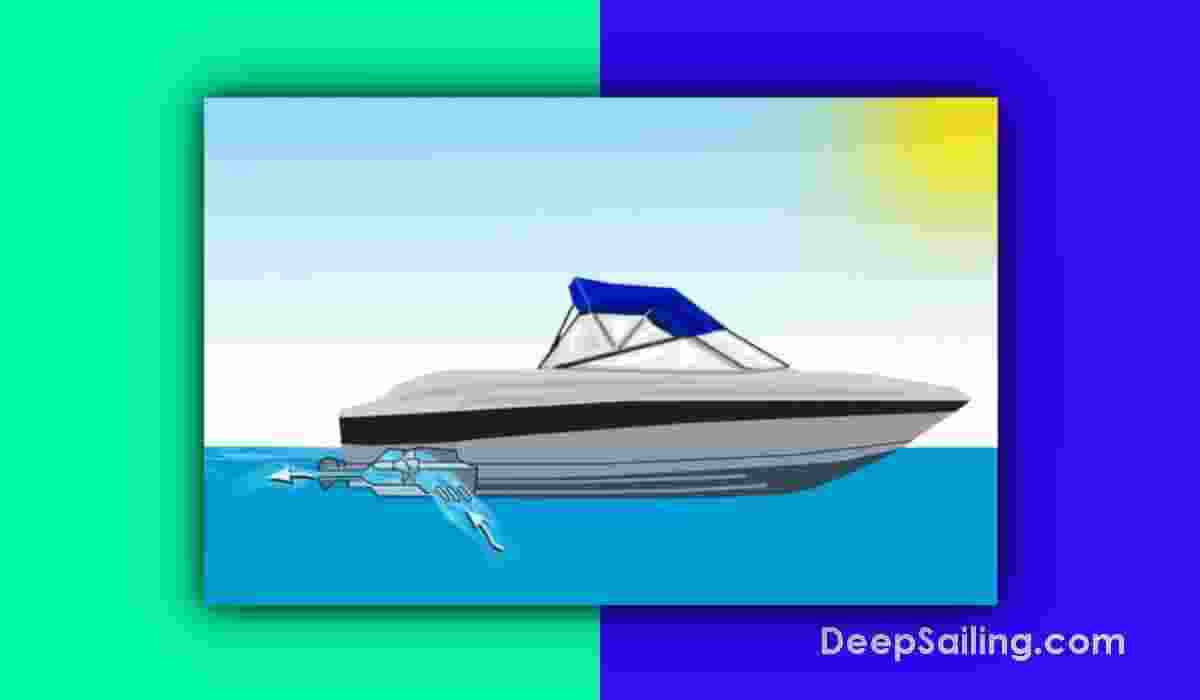
A jet drive inboard motor is a propulsion system for boats that uses a water jet instead of a propeller to create thrust. The engine is mounted inside the boat and a pump draws water in through an intake and forces it out through a nozzle at the stern of the boat creating a high-pressure jet of water that propels the boat forward.
Jet drive inboard motors are commonly used on boats that operate in shallow water or in areas where the risk of damage from submerged objects is high, such as rivers, lakes, and coastal areas.
They offer several advantages over traditional propeller-based systems, such as better maneuverability, improved safety, and reduced risk of damage to the propeller.
However, they can be less fuel-efficient than propeller-based systems and may require more maintenance due to the complexity of the pump and nozzle system.
2. Outboard Motor Definition
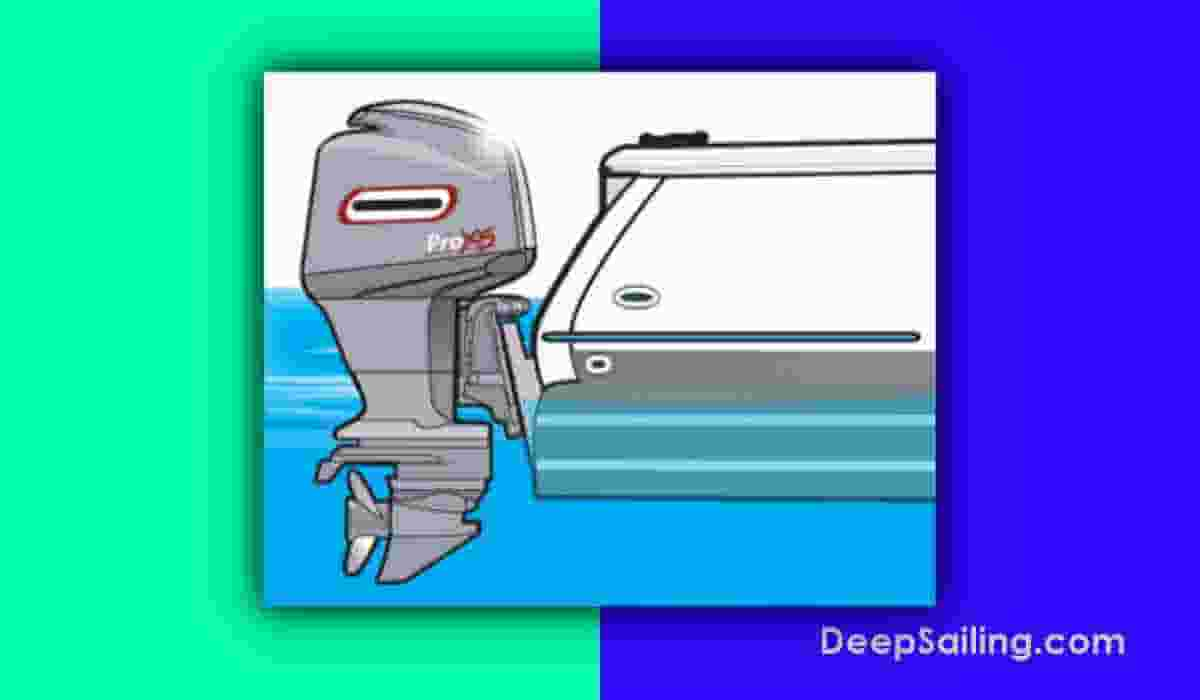
An outboard motor is a propulsion system for boats consisting of a self-contained unit that includes an engine, gearbox, and propeller. It is mounted outside the boat and is typically attached to the transom with clamps or bolts.
Outboard motors are commonly used on smaller boats such as fishing boats, dinghies, and inflatable boats as they are lightweight and portable, making them easy to remove for maintenance or storage.
They are available in a variety of sizes and power levels and can be powered by gasoline or electric motors.
3. Inboard/Outboard Hybrid Definition
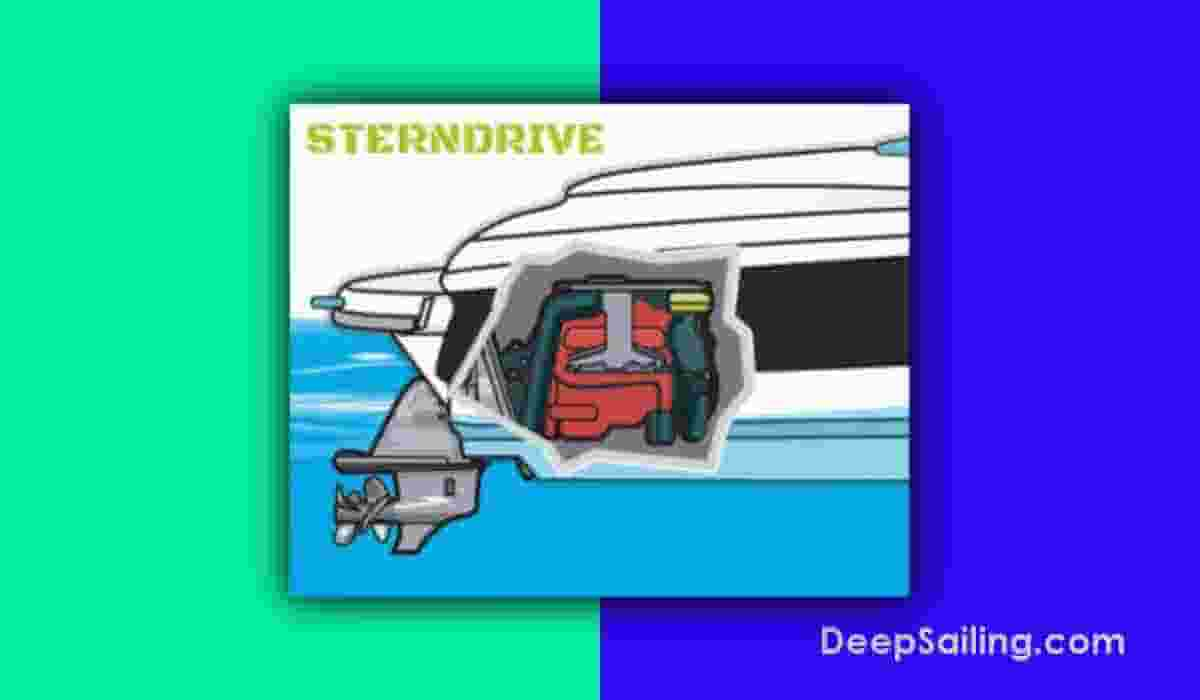
An inboard/outboard (I/O) drive, also known as a "sterndrive", is a propulsion system for boats that combines elements of both inboard and outboard motors. It consists of an inboard engine mounted inside the boat which is connected to a drive unit (also called a "lower unit") that extends outside the transom and includes a propeller.
The drive unit can be steered and tilted providing both propulsion and steering control.
Sterndrives are commonly used on mid-sized to large boats over 20 feet. The benefits of sterndrives are improved fuel efficiency, better handling and a smoother ride in the water.
They also provide more space inside the boat as the engine is mounted inboard rather than taking up deck space. However, they can be more complex and expensive to maintain and repair than outboard motors.
4. Inboard Engine Vs Outboard Engine Differences
The differences between an inboard and outboard motor are:
- Mounting location: An inboard motor is mounted inside the boat usually in the center of the hull while an outboard motor is mounted outside the boat at the stern
- Size and power: Inboard motors tend to be larger and more powerful than outboard motors as they are designed for larger boats and can be fitted with larger engines
- Handling and maneuverability: Outboard motors are generally more maneuverable than inboard motors as they can be tilted and turned to steer the boat. Inboard motors require a separate rudder for steering which can make them less responsive in tight spaces
- Maintenance and repairs: Inboard motors can be more difficult and expensive to maintain and repair than outboard motors as they are typically more complex and require more specialized knowledge. It is harder to repair certain parts of inboard motors for compared to outboard motors as some parts of inboard motors are difficult to reach
- Fuel efficiency: In general, outboard motors are more fuel-efficient than inboard motors as they are lighter and have less drag in the water
- Noise and vibration: Inboard motors tend to be quieter and produce less vibration than outboard motors as they are mounted inside the boat and are typically better insulated than outboards
- Space utilization: Inboard motors take up space inside the boat which can limit the available space for storage or other uses onboard the boat. Outboard motors do not take up any interior space but can limit the available space on the transom for boarding, recreational or fishing activities
- Prices: The price of an inboard motor is usually more expensive than an outboard motor with prices of new inboards ranging from $5k to $50k+ compared to the price of a new outboard motor ranging from $2k to $18k
5. Inboard Vs Outboard Motor Maintenance
Below is a maintenance comparison table between inboard motors and outboard motors.
Overall, inboard motors require more specialized knowledge and tools for maintenance and repair and can be more expensive to maintain and repair than outboard motors.
Outboard motors are generally more accessible and easier to work on but may require more frequent maintenance due to their exposure to the elements.
Ultimately, the maintenance requirements will depend on the specific make and model of the motor as well as the conditions in which it is operated.
6. Inboard Vs Outboard Engine Costs
The price of inboard motors vs outboard motors will vary quite substantially.
In addition to the cost of the motor itself, a boater will also need to factor in the cost of the installation which can range from $1,000 to $5,000 depending on the complexity of the installation.
The factors that affect the price of an inboard and an outboard motor are the type and size of the boat, the horsepower, the brand of the motor, and whether a boater chooses to purchase a new or used engine.
Inboard Motor Cost
A new inboard boat motor can cost anywhere from $5,000 to $50,000 or more.
A pre-owned inboard motor can cost from $1,500 to $15,000 for most recreational boats.
Ongoing maintenance costs of an inboard motor will range from $1,000 to $2,000 per year. This will include the price of replacement parts and service fees.
Outboard Motor Cost
The cost of a brand new outboard motor will range from approximately $2,000 to $18,000.
A pre-owned outboard motor will range in price from $1,500 to $5,000 for most recreational boats.
Ongoing maintenance costs of an outboard motor will range from $500 to $1,200 per year. This will include the price of replacement parts and service fees.
7. Inboard Motor Vs Outboard Motor Fuel Efficiency
According to data from makaiyacts, a test on two comparable 30 feet (9 meter) boats, one with an inboard motor and the other with an outboard motor was completed.
With both boats running at 25 knots, the outboard-powered gasoline boat burned 15.8 gallons (60 liters) of fuel per hour. In comparison, the inboard boat burned 10.6 gallons (40 liters) per hour.
At 30 knots, the outboard vessel burned 26.4 gallons (100 liters) per hour compared to just over 13.2 gallons (50 liters) per hour for the inboard. That’s 50% better fuel efficiency at 30 knots for the inboard engine.
This fuel efficiency data shows that a fine-tuned inboard motor is more fuel efficient than a fine-tined outboard motor.
8. Inboard Engine Pros & Cons
The pros and cons of an inboard motor are below.
9. Outboard Engine Pros & Cons
The pros and cons of an outboard engine are below.
Frequently Asked Questions
Below are the most commonly asked questions about inboard vs outboard motors.
Where Is The Best Place To Buy An Inboard Or Outboard Marine Motor?
The best place to buy a brand new inboard or outboard boat motor is directly from the manufacturer on their website. Buying directly from the manufacturer may provide the benefit of including a warranty.
The best places to buy a pre-owned inboard or outboard motor is directly from the manufacturer on their website, through the Facebook Marketplace or from a boat dealership or boat scrapyard.
What Is The Life Expectancy Of An Inboard & Outboard Motor?
The life expectancy of an inboard motor is 8,000 to 10,000 hours or up to 10 years.
The life expectancy of an outboard motor is 4,000 to 5,000 hours or 7 to 8 years.
However, some engines have been known to last longer with proper care and maintenance.
It's important to note that regular maintenance including oil changes, fuel filter changes, and other routine checks can help extend the life of the engine.
Additionally, proper operation of the engine including avoiding overloading, overheating, and running the engine at high speeds for extended periods of time can also help extend its lifespan.
What Are The Types Of Boats Using An Inboard Motor?
The types of boats using an inboard motor are:
- Cabin cruisers: These are larger boats that are designed for overnight trips and have a cabin area for sleeping and relaxing. Inboard motors are often used to power these boats because they provide a smooth and quiet ride
- High-performance power boats: These boats are designed for speed and agility and often use inboard motors to provide maximum power and acceleration
- Sport fishing boats: Many sport fishing boats use inboard motors to power their propellers. This allows for more precise control and maneuverability when navigating through shallow waters
- Trawlers: Trawlers are boats designed for commercial fishing and inboard motors are often used to power their propulsion systems. These boats are designed to be efficient and reliable for long fishing trips
- Houseboats: Houseboats are typically large vessels that are designed for living on the water. Many houseboats use inboard motors for propulsion allowing them to move through the water quietly and efficiently
- Yachts: Yachts are typically luxurious and high-end boats that are used for leisure activities such as cruising and entertainment. Inboard motors are often preferred for yachts because they provide a smooth and quiet ride which is important for maintaining a comfortable atmosphere on board
What Are The Types Of Boats Using An Outboard Motor?
The types of boats using an outboard motor are:
- Center console boats: These boats are often used for fishing and are characterized by a center console that houses the steering controls. They typically have a single outboard motor mounted on the transom for propulsion
- Pontoon boats: Pontoon boats are popular for leisure activities such as cruising, fishing, and water sports. They have a flat deck mounted on pontoons and often use one or two outboard motors for propulsion
- Jon boats: Jon boats are lightweight and versatile boats that are popular for fishing in shallow waters. They often use a small outboard motor mounted on the transom for propulsion
- Bass boats: Bass boats are designed for competitive fishing and are often equipped with powerful outboard motors for quick acceleration and high speeds
- Rigid inflatable boats (RIBs): RIBs are often used as tenders or rescue boats and are characterized by their inflatable tubes around the perimeter of the boat. They typically have a small outboard motor mounted on the transom for propulsion
What Are Popular Inboard Motor Brands?
Popular inboard motor brands are:
- Volvo Penta
- Yanmar
What Are Popular Outboard Motor Brands?
Popular outboard motor brands are:
- Mercury Marine
- Yamaha
- Honda Marina
- Suzuki Marine
What Are The Risks With Inboard Motors?
The risks with inboard motors are:
- Carbon monoxide poisoning: Inboard engines produce carbon monoxide gas which can be deadly if inhaled in high concentrations. Carbon monoxide can build up in the cabin or other enclosed areas of the boat especially when the engine is idling or running at low speeds. Proper ventilation and regular maintenance of the engine and exhaust system can help reduce the risk of carbon monoxide poisoning
- Fire and explosion: Inboard engines use gasoline or diesel fuel which can be highly flammable and explosive. Leaking fuel lines or faulty electrical systems can increase the risk of fire or explosion. Regular maintenance of the engine and fuel system as well as proper handling and storage of fuel can help reduce the risk of fire and explosion
- Oil spills and pollution: Inboard engines can leak oil and other fluids, which can pollute the water and harm the environment. Regular maintenance and proper disposal of used oil and other fluids can help reduce the risk of oil spills and pollution
- Mechanical failure: Like any mechanical system, inboard engines can experience mechanical failures such as a broken belt or seized engine. Regular maintenance and proper operation of the engine can help reduce the risk of mechanical failure
Overall, inboard engines are safe when properly maintained and operated but it's important to be aware of the potential risks and take steps to minimize them.
What Are The Risks With Outboard Motors?
The risks with outboard motors are:
- Carbon monoxide poisoning: While outboard motors are typically located outside the boat, some models have exhaust ports that can release carbon monoxide gas into the boat's interior. Proper ventilation and regular maintenance of the motor and exhaust system can help reduce the risk of carbon monoxide poisoning.
- Propeller strikes: Outboard motors have a propeller that rotates at high speeds and can pose a risk of propeller strikes to swimmers, divers, or other boats in the area. Proper safety measures, such as installing a propeller guard and posting warning signs, can help reduce the risk of propeller strikes.
- Fire and explosion: Outboard motors use gasoline or diesel fuel which can be highly flammable and explosive. Leaking fuel lines or faulty electrical systems can increase the risk of fire or explosion
- Mechanical failure: Like any mechanical system, outboard motors can experience mechanical failure and this is a risk to be aware of
- Stability and control: Outboard motors can affect the stability and control of the boat, especially in rough water or high winds. Proper weight distribution, trim adjustment, and steering can help maintain stability and control
What Is The Highest Horsepower Outboard Motor?
The highest horsepower outboard motor is the Mercury V12 which is a 12 cylinder 600 horsepower engine.
What Is The Lowest Horsepower Outboard Motor?
The lowest horsepower outboard motor is the Yamaha Portable 4-Stroke F2.5 which is a 2.5 horsepower engine.
What Is The Highest Horsepower Inboard Motor?
The highest horsepower inboard motor is the Mercury Marine QC4v 1750 which is a 9.0-liter four-valve cylinder 1750 horsepower engine.
What Is The Lowest Horsepower Inboard Motor?
The lowest horsepower inboard motor is the Yanmar 3-cylinder 3JH40 with 40 horsepower.